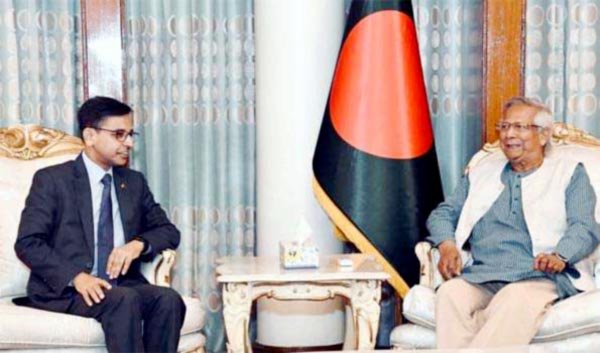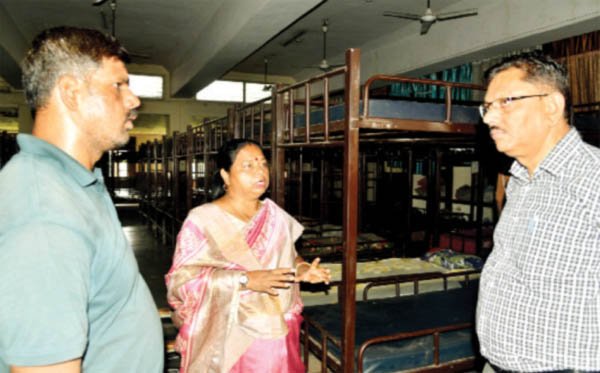Dhaka/New Delhi, Aug 22 (UNI) Indian High Commissioner to Bangladesh Pranay Verma met Bangladesh Interim Government’s Chief Adviser Prof Muhammad Yunus on Thursday and discussed issues of mutual interest.
The meeting was held at the state guesthouse Jamuna.
The meeting came amid an unprecedented flood situation in Bangladesh following torrential rains, with some advisers to the interim government putting the blame on India for the calamity.
Regarding talk in Bangladesh that the Indian High Commissioner “was summoned”, in the wake of the floods situation, it has been learnt that the request for a call on with Chief Advisor Mohd Yunus had been lodged by the Indian High Commission several days ago and was confirmed, much before today’s events related to “floods”.
“Any official backing of such misplaced narratives is unhelpful to bilateral ties. The use of “summon” is clearly an attempt at disinformation”.
Earlier, Environment, Forests and Climate Change Adviser Syeda Rizwana Hasan said Bangladesh will want to know the reasons behind the flood during the meeting, unb reported.
Rizwana said there is discussion in official channel to find ways for avoiding such flood in the future.
The Information and Broadcasting Affairs adviser Md Nahid Islam on Thursday said India opened a dam without issuing any prior warning or giving Bangladesh any scope for preparation.
India has shown a “non-cooperative and an inhuman attitude” by opening the dam sluice gates all of a sudden, he alleged.
Nahid made the remarks while speaking with reporters on Thursday after the advisory council’s meeting at state guesthouse Jamuna chaired by chief adviser Prof Muhammad Yunus.
Meanwhile, Sardar Uday Raihan, Executive Engineer of the Flood Forecasting and Warning Centre, said that the flood situation in the Feni and Noakhali regions has reached unprecedented levels, breaking records from the past 30 years.
Based on data from meteorological agencies, the engineer added that flood conditions have worsened in Moulvibazar, Habiganj, Cumilla, Feni and Chattogram.
Meteorologist AKM Nazmul Haque warned of the risk of landslides due to heavy rainfall.
Earlier, India had in a statement said that the flood situation in Bangladesh is not due to release of waters from the Dumbur dam upstream of the Gumti River in Tripura, amid reports in Bangladesh dailies alleging that the massive flooding in Comilla district of Bangladesh was due to India opening the dam sluice gates.
In a statement, the Ministry of External Affairs said that it has seen concerns being expressed in Bangladesh that the current situation of flood in districts on the eastern borders of Bangladesh has been caused by opening of the Dumbur dam upstream of the Gumti River in Tripura.
“This is factually not correct”, the Indian government said.
“We would like to point out that the catchment areas of Gumti river that flows through India and Bangladesh have witnessed heaviest rains of this year over the last few days.
“The flood in Bangladesh is primarily due to waters from these large catchments downstream of the dam.
“The Dumbur dam is located quite far from the border – over 120 Km upstream of Bangladesh. It is a low height (about 30m) dam that generates power that feeds into a grid and from which Bangladesh also draws 40MW power from Tripura.
“Floods on the common rivers between India and Bangladesh are a shared problem inflicting sufferings to people on both sides, and requires close mutual cooperation towards resolving them.
“As two countries sharing 54 common cross-border rivers, river water cooperation is an important part of our bilateral engagement.
“We remain committed to resolving issues and mutual concerns in water resources and river water management through bilateral consultations and technical discussions,” the Indian government said.











